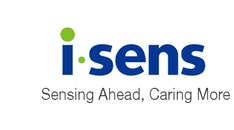How to Monitor Blood Sugar on the Go
Traveling for the Holidays? Holiday travel can be joyful, meaningful, and… disruptive. Different meals, irregular schedules, long car rides, airport...
Shop today >> Free Shipping for orders $99 and up
i-SENS USA
3545 Lomita Blvd Unit D, Torrance, CA 90505
i-sens-usa@i-sens.com
